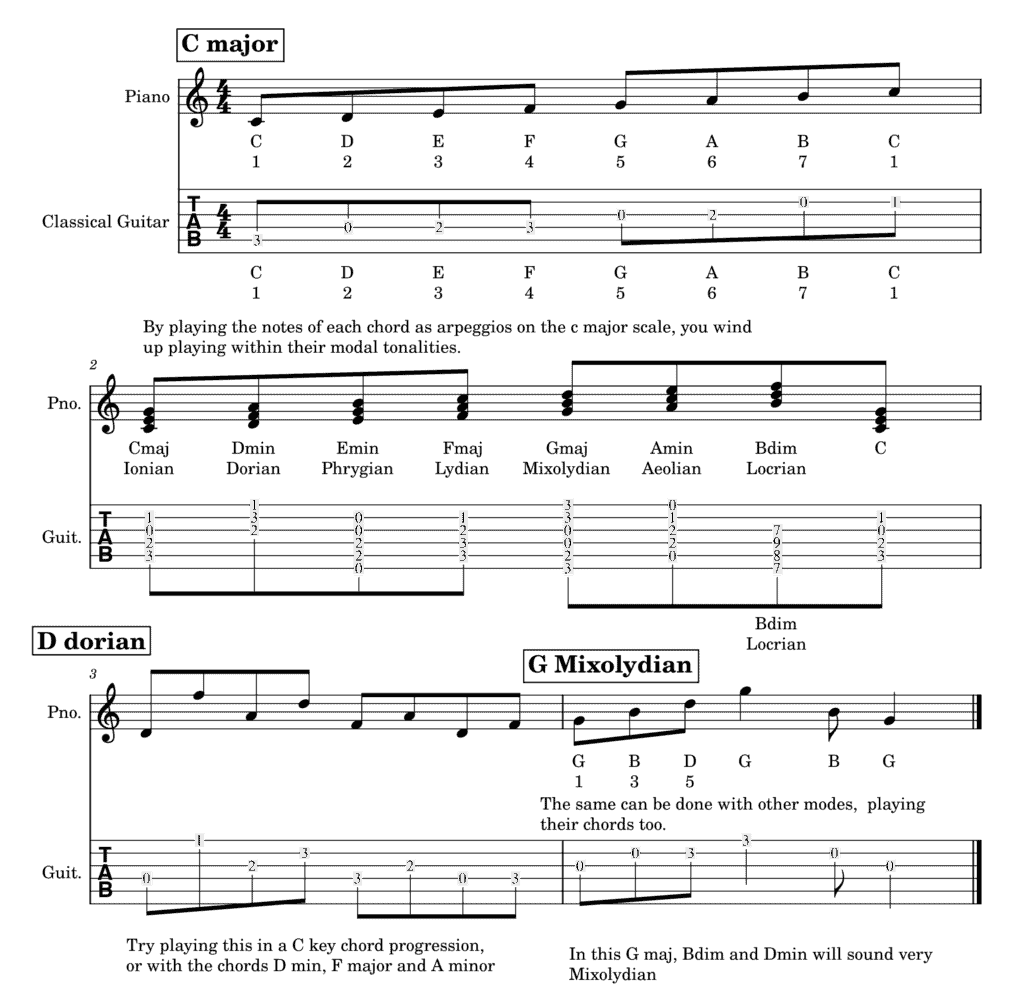The relative minor and major scales can be a little confusing for beginners to understand and even intermediate musicians.
Relative major and minor scales are music keys that share the same notes but have different starting points that feel like home. Ultimately it all depends on the context and how the music is intended to flow and resolve.
How do you tell whether you’re playing in the major key or its relative minor?
It all comes down to the resolution of the melody and chord progression.
If the melody resolves toward the major first, then it’s likely the major key.
If it resolves to the minor note, then it’s likely the minor key.
We’ll be looking at a few tips to understand these two similar keys today, as well as how best to make use of the two differing scales.
Does it matter to know the difference and what’s the point?
Read on to find out.
What is a relative minor or major scale?
A relative scale is a scale that shares the same key signature as another.
For instance C major and A minor share the same key signature.
It’s similar to modes, but also a little different.
Modes depend on where the melody starts, but relative minors depend more on the key signature and the chords.
But they’re very similar, which is where it can get confusing.
Is it important to know relative scales?
It is. As is everything to do with music theory, if you’re interested in knowing more about how to make music.
The thing with knowing the difference between the relative scales is that it helps you when composing, to know what will likely fit into your song. It also helps to frame the intent of a song.
If you’re playing a song that is either in the Key of G or E minor, if you know it’s E minor, it allows you to improvise easier on it, understand its patterns better, and figure out the melody if you don’t have tabs.
If you know a song is in the Minor scale, you know that it’s likely to start its melody on the minor note or in our case, on E, not G.
It’s also important to know the differences between relative scales when you’re composing because it helps you to better structure your songs.
How to find relative scales on the guitar
If you want to find the relative minor of any major scale, you just go up to the sixth note from the root. So if you’re in C major, CDEFG A, and you have A minor.
If you want to find the relative major from any minor key, you simply go up to the third from the root note.
So if you’re in E minor, E, F#, G and you have G major.
What’s the point of relative scales if they use the same notes?
It has everything to do with the “home” note. In other words, the note that resolves the best.
One of the uses of this comes in when you’re playing a song and you’re wanting to add a lead line to it.
If you’re playing in the minor key, you can more easily create a melody by using the minor tonality, by playing the tonic minor and the minor’s 4th, 5th, and 6th.
The same goes for the relative major. We tend often to play in the major key and use major scale tonalities when we play.
We play the major first, fourth and fifth and the minor sixth.
Interestingly, when playing in the minor key, the fourth and fifth are minors, while the sixth is a major.
I like to use this sometimes to create a very dark sound to songs by playing the relative minor fourth and fifth chords in a minor key.
Essentially, it comes down to your goals with your song.
Knowing which keys best suit your goals, helps you to make music without it being a guessing game, which leaves you with the space to focus on the extra things.
Some examples of relative scales
Some examples would be:
- C Major and A minor
- G major and E minor
- F major and D minor
- E major and C# minor
How to memorize relative scales
I like to use my hand and count notes on my fingers because we only have 7 notes to deal with anyway.
If you’re working with any major key, you can just count up to the 6th note and get the relative minor. If you’re in the minor key, you just count up to the third note and you get the relative major scale.
Modes also share the same notes
Modes are very similar to the concept of relative scales. In fact, if we look at C major, you could say that C major is the Ionian, being the first or tonic.
A minor is the Aeolian mode and the sixth interval of C major.
All the modes on any key share the same notes.

The only difference is where they start. D Dorian would be the second modal interval for C and it shares all the notes of C, but when you look at D Dorian, it’s got a very folky sound.
I found a really great example of how to understand modes and play in them.
Essentially, if you take the three notes of the chord triad and you make a melody centered around them, you wind up creating a melody based on the mode.
You can play D Dorian by playing D, F, and A notes in the key of C and you’ll experience that Dorian sound.
The same can be said for any other mode in any other key, it’s just a matter of interval and relationship.
Relative vs parallel keys
Fancy words, for simple concepts.
We’ve learned about the relative keys today.
Which are two keys that share the same notes, despite starting on different tonics.
Parallel keys share the same tonic, so technically they run parallel to each other, but don’t share the same notes.
The relative minor of C major is A minor.
The parallel minor of C major is C minor.
Some notes will be different but the starting note is the same.
Take a look at it:

And if you can’t read music, don’t worry: Just look at the alterations preceding some notes from C minor and you will see the differences are plenty.
Hopefully, this has made relative and parallel scales clearer for you!

Hello there, my name is Ramiro and I’ve been playing guitar for almost 20 years. I’m obsessed with everything gear-related and I thought it might be worth sharing it. From guitars, pedals, amps, and synths to studio gear and production tips, I hope you find what I post here useful, and I’ll try my best to keep it entertaining also.





